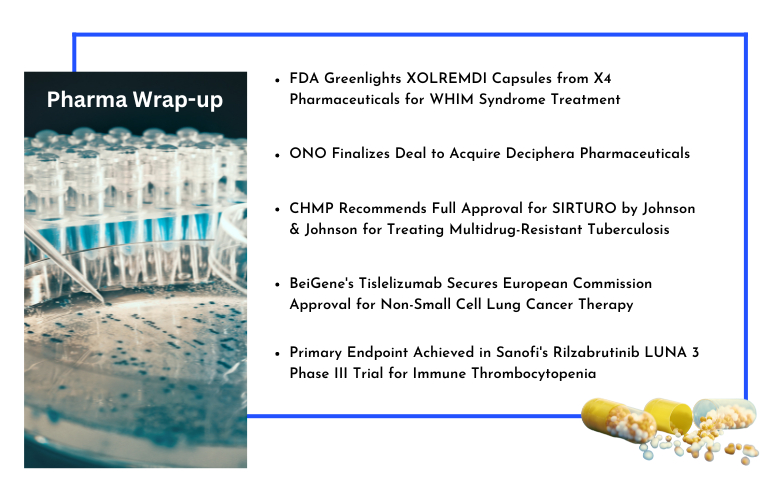The launch of a novel drug in the market is not less than a celebration in the pharmaceutical and healthcare market; however, it also brings the real challenge of sustenance in the market. Similar is the picture of the Thrombocytopenia Drugs Market. Thrombocytopenia pipeline possesses potential drugs in mid-stage developments to be approved shortly. There are newer agents coming to the market, for instance, Fc receptor via monoclonal IgG antibodies mechanism, BTK [Bruton tyrosine kinase] inhibition, and so on, however, the real challenge lies in the compliance in terms of patients perspectives such as cost and tolerance.
At present, there stands no treatment option that can cure the disease. The treatment varies on the basis of its cause and severity with the ulterior motive to prevent the death and disability that is frequent in patients due to excess bleeding.
Thrombocytopenia, a condition characterized by low platelet count, can either be inherited or can also be acquired in due course of one’s life owing to several factors that range from aplastic anaemia to leukaemia. In these cases, there exist drugs causing Thrombocytopenia, known as Drug-induced Thrombocytopenia (DIT). Nevertheless, sometimes there are cases in which the cause of the disease remains under the covers. Drug-induced Thrombocytopenia (DIT) is relatively a common clinical disorder in patients. Thus, it is imperative to rapidly identify and remove the offending agent before the excess bleeding.
In cases of inherited Thrombocytopenia, platelet transfusions are carried out; however, there is always high chances of sensitization. However, with the availability of leukoreduction, the risks are averted. In cases of the high risk of marrow failure or a high risk of acute leukemia, allogeneic stem cell transplantation is prescribed.
In most acquired cases, surgical and invasive procedures successfully manage to resolve the platelet count. The mainstay of Thrombocytopenia treatment is plasmapheresis with plasma replacement. Other treatment modalities in non-responders to plasmapheresis include immune-suppression, not limited to high dose steroids and B-cell depleting agents (e.g., rituximab). A fully normal platelet count is not necessary to prevent bleeding, even with severe cuts or accidents.
Another obvious treatment in the case of drug-induced Thrombocytopenia is to stop or discontinue the drug causing it. Hundreds of drugs have been identified to implicate decreases platelet count in the patients. Most often associated drugs causing Thrombocytopenia include heparin, cinchona alkaloid derivatives (quinine and quinidine), penicillin, sulfonamides, non-steroidal anti-inflammatory drugs (NSAIDs), anticonvulsants, antirheumatic and oral antidiabetic drugs, gold salts, diuretics, rifampicin and ranitidine along with several others that are often the culprits occasionally. (Drug-Induced Thrombocytopenia, Gian Paolo Visentin, Chao Yan Liu)
Albeit, in the past two decades, a lot has been learnt and understood about the etiology of the pathogenesis of Drug-Induced Thrombocytopenia, the knowledge of the molecular nature of the drugs, immune-response to the drugs and the production of antibodies in the body is far from complete. Here again, what makes the condition difficult to address is the unclear etiology of Thrombocytopenia in most cases.
In the case of severe bleeding, if the etiology of Thrombocytopenia is unknown but not thought to be immunologic, platelet transfusion can be used to provide an immediate platelet increase. If the cause of Thrombocytopenia is unknown, and there are no contraindications, such as infections, corticosteroids may be used to increase the platelet count. Other supportive measures include high dose intravenous immunoglobulin, a brief course of corticosteroids. If the condition is mild, the patient may not require any form of treatment.
The Thrombocytopenia drugs market size in the 7MM (the US, EU5 (the UK, Germany, France, Italy and Spain) and Japan) is expected to grow at a CAGR of 4.69%, for the study period of 2018–2030. The growth of the market size can be labelled pretty much modest as the demand of the novel drugs can be witnessed rising owing to no available cure in the Thrombocytopenia treatment market.
Major key players involved in developing novel Thrombocytopenia treatment drugs market include UCB Biopharma, Principia Biopharma, Baxalta/Takeda, Argenx, etc. hold the potential to create a significant positive shift in Thrombocytopenia market size. Expected launch of upcoming therapies, Rozanolixizumab (UCB7665); Rilzabrutinib (PRN-1008); BAX930; Efgartigimod (ARGX-113); Cablivi (caplacizumab); Tavalisse/Tavlesse (Fostamatinib); Doptelet (Avatrombopag); Nplate (Romiplostim)-for CIT; and Mulpleta (lusutrombopag) is, without a doubt, going to give the market size growth a much-appreciated push.
UCB Biopharma is working to develop Rozanolixizumab (also known as UCB7665), an intravenously and subcutaneously administered, investigational humanized monoclonal IgG antibody for the treatment of idiopathic thrombocytopenic purpura and myasthenia gravis (MG). At present, the company is evaluating this molecule in the phase III stage of development in subjects with primary Immune Thrombocytopenia (ITP). The company expects topline the phase III trial results by the second half of 2022.
Principia Biopharma is also developing Rilzabrutinib (PRN-1008), an orally administered reversible covalent inhibitor of Bruton Tyrosine Kinase (BTK). The drug candidate is a fast-acting, orally available therapy that could effectively and safely modulate B-cell function without depleting the B-cells and is expected to be a major advancement in treating autoimmune and inflammatory diseases. It is under development by Principia Biopharma and is currently in the phase III stage of development for the treatment of Immune Thrombocytopenia in adults and adolescents with persistent or chronic Immune Thrombocytopenia (ITP).
TAK-755 (BAX930/SHP655) is a human recombinant ADAMTS13, the plasma metalloprotease that regulates the von Willebrand Factor (VWF) multimers. The drug provides an alternative to the current replacement of ADAMTS13 using large volumes of fresh frozen plasma that contain variable amounts of ADAMTS13 and typically require two hours or more for the preparation and infusion.
Efgartigimod (ARGX-113) is an investigational therapy for IgG-mediated autoimmune diseases, designed to leverage the natural interaction between IgG antibodies and the recycling receptor FcRn. Argenx, designed efgartigimod to degrade circulating disease-causing autoimmune antibodies and has potential in many large and orphan indications, namely multiple sclerosis, immune Thrombocytopenia, systemic lupus erythematosus, myasthenia gravis, and skin-blistering diseases. The drug is currently in Phase III trial for adult patients with primary ITP.
GC5101B is a polyvalent intravenous human immunoglobulin G preparation. It is prepared from plasma collected from more than 1000 healthy blood donors, and it expresses a large spectrum of antibody specificity. GC5101B is designed to replace the therapy for the primary immune deficiency (PID) as well as increase platelet counts and prevent bleeding in immune/idiopathic thrombocytopenic purpura (ITP). This product is manufactured using three steps designed to eliminate viruses; Fraction III precipitation, SD virus inactivation, and nano-filtration.
Narsoplimab (OMS721) is an intravenous, human monoclonal antibody targeting mannan-binding lectin-associated serine protease-2 (MASP-2), the effector enzyme of the lectin pathway of the complement system. This novel drug is designed to prevent complement-mediated inflammation and endothelial damage while maintaining the respective functions of the other pathways of innate immunity. The EC also granted narsoplimab designation as an orphan medicinal product for treatment in hematopoietic stem cell transplantation. According to the clinical trial website, the drug is in Phase III studies, but the status is unknown.
To sum it all, upcoming pipeline therapies in the Thrombocytopenia drugs market are based on novel mechanisms of action that aims to target several different Thrombocytopenia patient groups. The pharmaceutical companies in the market are focusing more on improved drug delivery to enhance patient compliance. Undoubtedly, recent approvals of Mulpleta, Doptelet, Tavlesse, and Rituxan have substantially increased the market share. However, the drugs approved in the Thrombocytopenia drugs market, say Mulpleta, are kept in Tier 5 by the Medicare, which implies that these are usually non-preferred brand-name drugs and cost more than those kept in other Tiers. Further, the market is not immune to late-stage clinical failures, which poses to be a great hurdle, rather, a constraint that can act out and hamper the revenue generation. Thus, future research in the Thrombocytopenia drugs market needs to revolve around the targeted therapies that are in line with patient tolerance and financial aspects.



